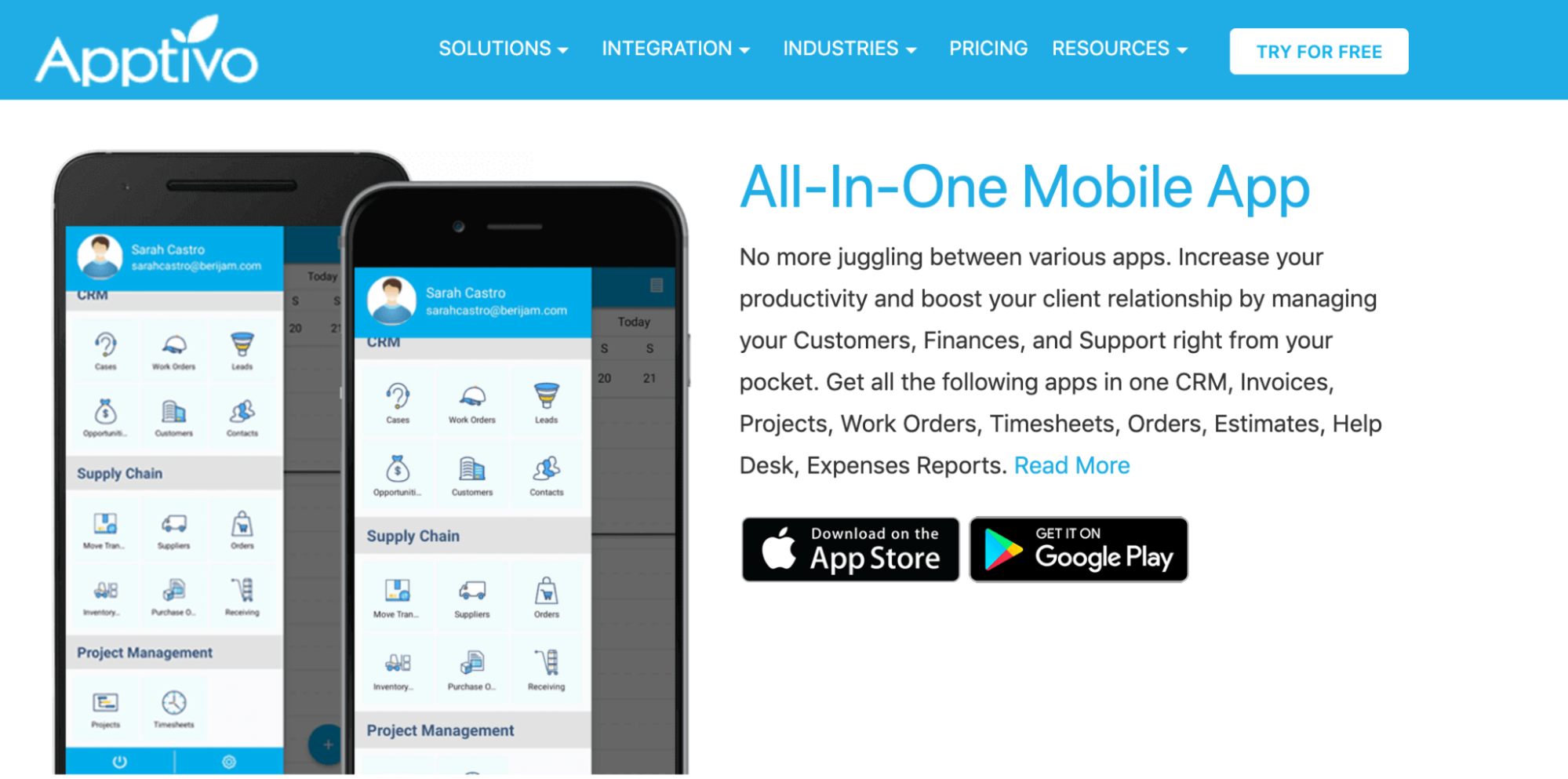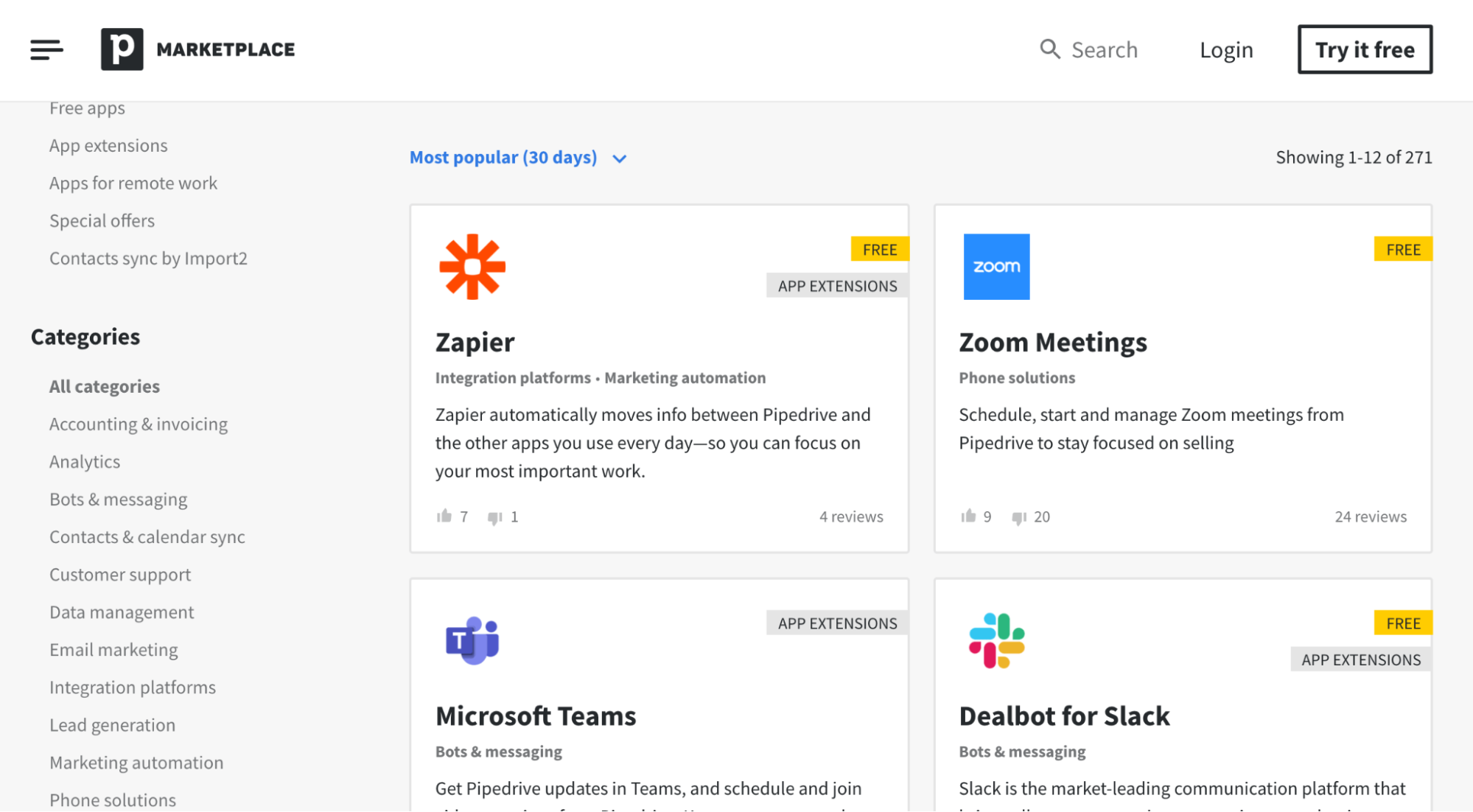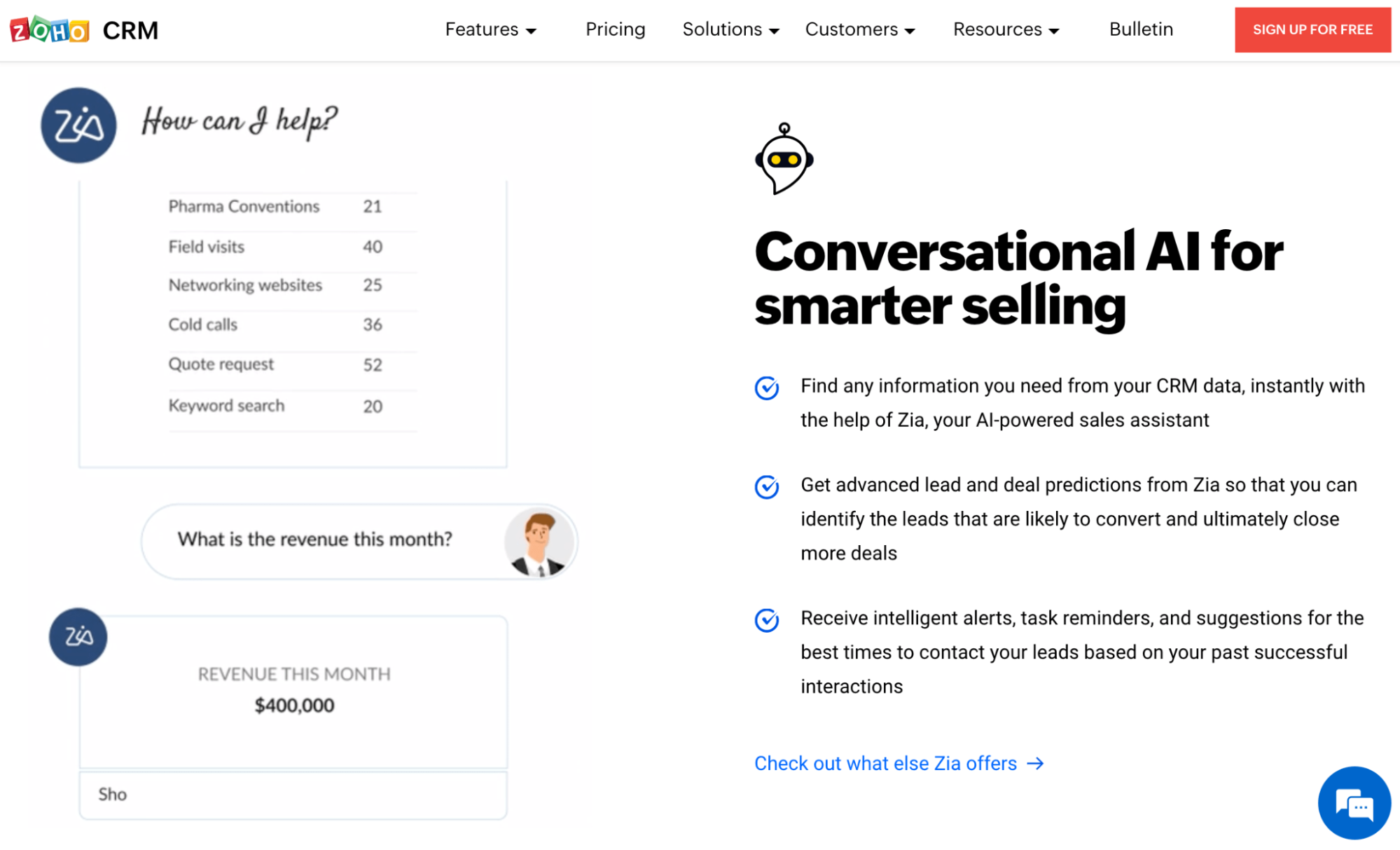CRM (customer relationship management) has rapidly evolved over the past several years. What began as a contact system for customers has turned into a solution for every department in an organization.
Regardless of your business size or industry, you need to keep an eye on CRM trends today and in the future.
We’ve identified what’s trending upward in the CRM space for the coming years after extensive research.
Why Are CRM Trends Important?
The customer experience (CX) is the driving force of today’s modern business world. So many brands have become customer-focused, and consumers expect nothing but the best when making buying decisions.
If your organization can’t identify the consumer’s needs and provide them with the most relevant information at each stage of the buying cycle, you’ll quickly fall behind the competition.
Beyond the initial sale, customers crave brand engagement. Whether it’s a new offer, deal, promotion, or they need assistance with a previous purchase, the way your brand handles these interactions will make or break your success.
In terms of CRM, new software is helping companies drive these brand engagements. From analyzing customer data to tracking conversational histories, the possibilities are seemingly limitless.
Failing to follow the latest CRM trends puts your business at a massive disadvantage.
It’s impossible to improve the customer experience without adapting to new CRM trends. Those who adapt will increase customer conversion rates, retention rates, and customer lifetime value.
How Do We Look For CRM Trends?
The process for identifying trends in any industry is quite complex. Our team conducted extensive research related to the latest CRM statistics in every category imaginable.
After analyzing the numbers and trends from prior years, experts can estimate the trajectory of where things are heading in the future.
Furthermore, our team keeps a close eye on all of the latest software and technology for businesses. We’re testing new solutions on a daily basis. Using different tools in the CRM category, we’ve been able to see which new features are the most prevalent among the top players in the CRM industry.
5 CRM Trends You Need To Know
There are dozens of emerging CRM trends. But these five are the most important to consider:
Trend 1: Ease of Adoption
Historically, there have been high barriers to entry in the CRM space. Smaller companies and users who weren’t very tech-savvy haven’t been able to deploy these tools.
Many CRM solutions were marketed toward enterprise organizations with dedicated IT teams and staff who had experience using CRM tools in the past.
Those days are long behind us. Today, CRM software is for all of us.
Even some of the best CRM software solutions on the market can be used by businesses of all sizes. From freelancers to small businesses, SMEs, and everything in between, there’s a solution for everyone.
Lots of CRM software is cloud-based. So there’s no on-site installation, and you don’t need an in-house IT staff to manage the system. Cloud deployment makes it easy to get up and running immediately.
Using CRM solutions is much easier as well. They’re not as clunky and rigid as they were in the past so that non-technical users can figure it quickly—without a steep learning curve.
Price is another reason why more companies have adopted CRM software. It’s now extremely affordable to deploy these solutions for your business.
Look at an industry leader, like HubSpot. This CRM software is 100% free.
You can add one million contacts and onboard your entire team to this platform without paying a dime.
Even paid solutions from HubSpot and other popular tools on the market are incredibly affordable. Entry-level rates typically start around $10 to $30 per month.
These are just a few of the many reasons why so many businesses have adopted CRM in recent years.
The numbers don’t lie. A recent study suggests that overall CRM usage increased from 56% to 74% in the last year. 91% of companies with 11+ employees use CRM software.
Trend 2: Artificial Intelligence (AI)
Similar to most industries, AI is trending upward at a rapid rate. Most of the CRM tools that we test and review have implemented AI solutions in some form or another.
Those that haven’t added AI features to the tool have plans to do so in the coming years.
Arguably the most significant benefit of leveraging AI with a CRM solution is the ROI. Computers can do things at a rate that’s impossible for even an entire team of people. By letting AI handle data processing and other complex tasks, your team can focus more on selling.
Here are just a handful of ways that AI is currently being used in CRM:
- Consumer sentiment analysis
- Predictive lead scoring
- Improved customer segmentation
- Personalized recommendations based on consumer behavior
- Sales forecasting
- Chatbots for sales, marketing, and support
- Increased customer engagement
One specific example of AI for customer relationship management is Zia—the AI-powered sales assistant from Zoho CRM.
One of the craziest parts about AI is that we’re just barely scratching the surface with its capabilities.
Years ago, AI sounded like something that only belonged in science fiction movies. But today, it’s everywhere in our daily lives—including our CRM software.
As AI technology continues to advance in the coming years, businesses using future-proof CRM software will have a significant advantage compared to those using outdated systems.
Trend 3: Market Saturation
It feels like a new CRM software is released every day. As of the time I’m writing this, there are 642 different CRM solutions listed on G2. But more isn’t always better. Only 11% of these tools have a five-star rating.
Software companies have recognized the CRM trend and have been releasing new systems to get a piece of the pie.
As a business owner, it can be tough to weed out the good from the bad. To make your life easier, check out our guide to the best CRM software. We’ve done all of the research for you and narrowed down the top picks based on different use cases.
Even with so many systems out there to choose from, one dominates the global market share—Salesforce. Salesforce controls roughly 20% of the CRM market share worldwide, according to a recent study.

If you’re overwhelmed by the sheer number of options out there, you can’t go wrong with the industry’s most popular solution.
According to Grand View Research, the total CRM market size is expected to grow at a CAGR of 14.2% through 2027.
I expect to see the number of CRM solutions available on the market continue to rise in the coming years. But I can’t imagine the biggest players losing a ton of market share to these newer tools.
Trend 4: CRM Mobility
Roughly ten years ago, all CRM activity was done in a traditional office setting. Users were tied to a desktop using a local CRM solution. When they were away from that desk, they weren’t able to access any CRM data.
Cloud-based SaaS has extended the reach of modern CRM solutions. But mobile apps take that one step further.
The ability to go mobile is a crucial component of successful sales.
Even in the pre-pandemic days, more and more companies were shifting to remote work. This is especially true for sales, marketing, and support roles—the three primary components of CRM.
The best CRM tools have recognized this trend and adapted accordingly. Now, users can access crucial CRM information from a smartphone or tablet.
So many business professionals work in odd hours outside of a typical 9-5 job. Even if people are working in an office, they may want to quickly check a report or follow up with a client when they get home. Mobile CRM features make this possible.
For CRM mobility to have a true impact, desktop and mobile experience needs to be interchangeable. If you can’t get what you’re looking for from mobile, it’s a useless feature.
Here’s an example from Apptivo, a CRM solution that allows users to do anything from mobile devices:

If your team uses a solution like this, they won’t skip a beat as they transition from their computers to mobile.
Whenever you’re dealing with sensitive customer data, security will always be a top concern. So it’s important to use a CRM solution that understands these risks and secures the software accordingly, regardless of the device that it’s being accessed from.
Employees accessing CRM from their homes on a tablet will have the same security benefits they would while in the office.
Trend 5: CRM Integrations
As businesses continue to adopt and deploy new technology, things can start to get complicated for the end-user.
A recent study of 2,000 office workers found that 54% of employees use at least five different computer programs simultaneously. And 59% of those surveyed said that they waste time switching between different apps throughout the day.
This defeats the purpose of using new technology. If it becomes a burden on your staff, you can’t expect efficiencies to improve.
That’s why it’s so important to consider the different possibilities of CRM integrations. This is something that’s trending upward for the foreseeable future.
The idea behind a CRM integration is that it limits the number of times a user needs to switch between different apps. Everything they need can be accessed in a single source of truth.
It’s not about eliminating tools completely. But instead, you can use CRM integrations to extend the functionality of the software you’re using.
Look at a CRM solution like Pipedrive.

This is just one of many examples of a tool that has an app marketplace or similar alternative to manage integrations.
As of right now, there are 270+ different apps that you can integrate with this solution. The number continues to climb. I remember using this tool less than a year ago, and the integration list was closer to 150.
Remember, CRM is all about the customer. It’s easy to forget this as you’re getting lost in a web of so many different features and capabilities.
To best serve the customer, you need to have a firm grasp of everything they are doing.
A recent study suggests that modern marketers are using an average of 16 different data sources to track customers—16! That’s a huge number.
Pulling data from different sources and manually entering the info into a CRM tool is a colossal waste of time. Plus, there are too many opportunities for errors during this transmission process.
CRM integrations make your life much easier. Just connect your CRM with the data sources, and it will pull that information automatically.
Not only will integrations improve the way your CRM system functions, but they will also boost employee productivity. Users can spend more time within a single platform instead of bouncing back and forth between multiple screens.
How Trends Affect You Affect Your CRM Purchasing Decisions
The term “future-proof” gets thrown around frequently in the business world, especially when referring to software. But the meaning of this phrase gets overlooked far too often.
If you’re not keeping a close eye on the trends, your CRM solution will quickly be outdated within a year or so.
From here, one of two things can happen. You’ll either stick with an outdated tool and slowly fall behind the competition as your customers’ needs go overlooked. Or you’ll be forced to switch solutions, and your whole team will have to re-learn a new system.
Switching CRM software can cause data loss and other problems too. So it’s something that you’ll definitely want to avoid.
Don’t rush through the buying process as you’re evaluating different CRM tools. Ask for demos, take advantage of free trials, and assess whether the software can accommodate your needs.
You should also look to see if the software is keeping pace with the latest CRM trends.
Is the provider coming out with new features like AI assistance and automation? Can the software seamlessly integrate with other third-party business tools that you’re already using?
These are just a couple of examples of the many questions you should be asking as you go through the CRM purchasing process. Keeping pace with CRM trends will ultimately help you make the right decision.



